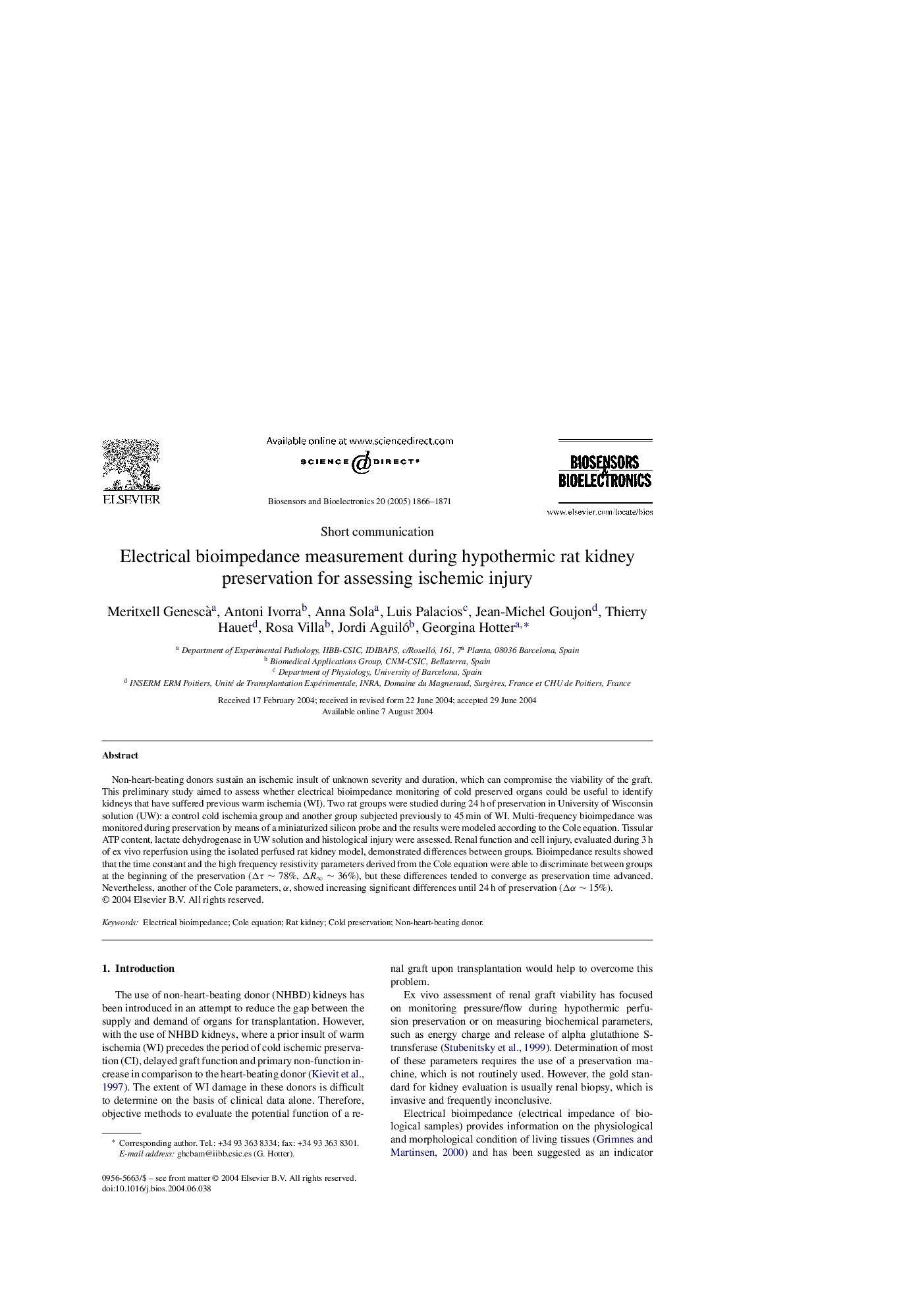| Article ID | Journal | Published Year | Pages | File Type |
|---|---|---|---|---|
| 10429800 | Biosensors and Bioelectronics | 2005 | 6 Pages |
Abstract
Non-heart-beating donors sustain an ischemic insult of unknown severity and duration, which can compromise the viability of the graft. This preliminary study aimed to assess whether electrical bioimpedance monitoring of cold preserved organs could be useful to identify kidneys that have suffered previous warm ischemia (WI). Two rat groups were studied during 24 h of preservation in University of Wisconsin solution (UW): a control cold ischemia group and another group subjected previously to 45 min of WI. Multi-frequency bioimpedance was monitored during preservation by means of a miniaturized silicon probe and the results were modeled according to the Cole equation. Tissular ATP content, lactate dehydrogenase in UW solution and histological injury were assessed. Renal function and cell injury, evaluated during 3 h of ex vivo reperfusion using the isolated perfused rat kidney model, demonstrated differences between groups. Bioimpedance results showed that the time constant and the high frequency resistivity parameters derived from the Cole equation were able to discriminate between groups at the beginning of the preservation (ÎÏ â¼ 78%, ÎRâ â¼ 36%), but these differences tended to converge as preservation time advanced. Nevertheless, another of the Cole parameters, α, showed increasing significant differences until 24 h of preservation (Îα â¼ 15%).
Keywords
Related Topics
Physical Sciences and Engineering
Chemistry
Analytical Chemistry
Authors
Meritxell Genescà , Antoni Ivorra, Anna Sola, Luis Palacios, Jean-Michel Goujon, Thierry Hauet, Rosa Villa, Jordi Aguiló, Georgina Hotter,
